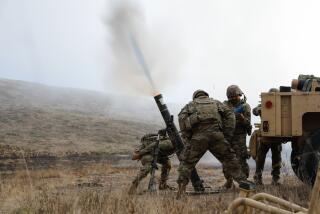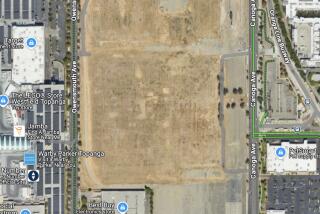Emissions Found at Radar Site No Risk to Residents, Navy Says
- Share via
A confidential study of a Navy radar facility only a few hundred feet from beach homes has determined that there may be hazardous radiation levels on Navy property but no emissions that would endanger nearby residents, beach visitors or passing ships.
The report, released Monday, came after a residents group and the California Coastal Commission demanded answers regarding the Surface Warfare Engineering Facility adjacent to the mouth of Port Hueneme Harbor and down the coast from Silver Strand Beach.
The study, conducted in October, concluded that none of the problems detected would expose people beyond the facility’s boundaries to hazardous levels of radiation. It recommended that precautions be taken.
To correct the problems, the Navy plans to:
* Install a barrier chain to prevent unauthorized entry to areas to the side and in front of the radar.
* Fix a leak around the radar and replacing gaskets at two spots.
The site, which is used as a radar testing facility, became the focus of local activists who fought last year against the Navy flying jets directly above their homes.
At their urging, the Coastal Commission asked for a report on radiation levels emitted from the facility. The residents group, called BEACON, filed a Freedom of Information request in December to receive a copy of the confidential report.
“We have just been asking them to provide us with a study that would tell us there was no hazard,” said Vickie Finan, a board member of the Channel Islands Beach Community Services District and member of BEACON.
BEACON members had not read or seen the study as of Monday evening but said they were looking forward to reviewing it. Lee Quaintance, a member of BEACON, said the Navy had conducted two previous studies in 1978 and 1994.
But he said they were both deficient because they did not look at how the radiation levels affected the general public, not just Navy personnel.
“We have people who sit out on the jetty and do fishing. We have residences that are close to the building,” Quaintance said. “And what we have been wanting is for the Navy to assure us that there is no hazard to the residents and users. We would like that assurance to be meaningful and easily understood.”
The Navy study divided sites into those accessible only to personnel at the facility and those open to the public.
The public areas include the beach, the land around the building, two jetties near the facility and the shipping channel. The study found no excessive radiation levels at any of those locations.
More to Read
Sign up for Essential California
The most important California stories and recommendations in your inbox every morning.
You may occasionally receive promotional content from the Los Angeles Times.










